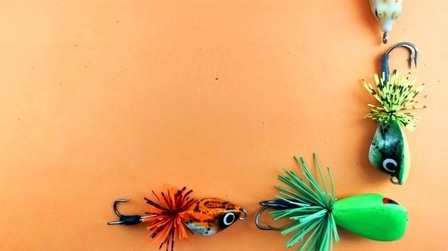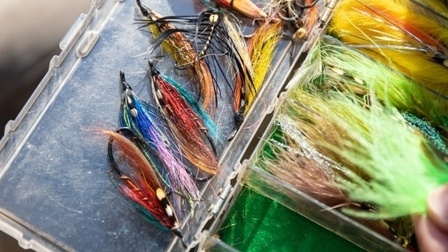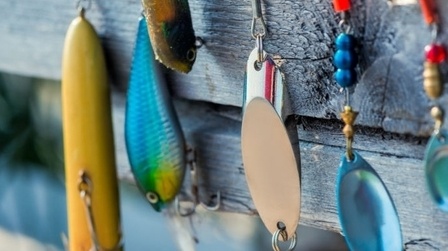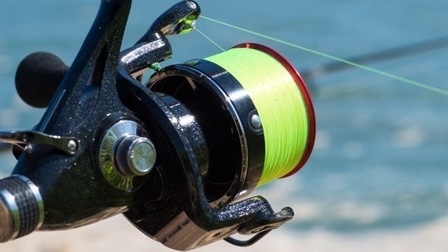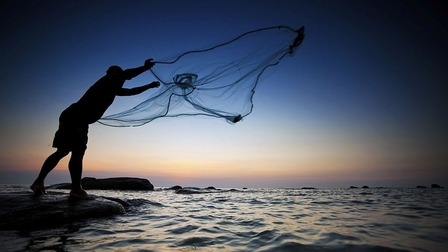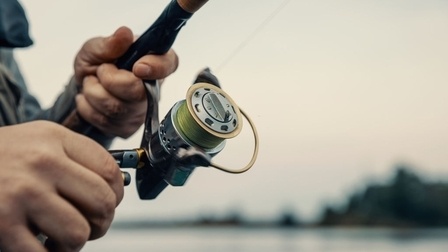When it comes to hooking on a fishing trip is never less important to beginners and professional anglers. Since it shows the part that makes it successful, whether you can catch it or not, it looks simple, but each type of hook will have many uses depending on what you want to do. However, for the sharpness and sensitivity of the hooks, the kit that comes with them is a hook sharpener.
Moreover, in order for a fishing session to be interesting, firstly you need to equip the hook, secondly, you understand a good way to sharpen the hook because there are right and wrong ways to do it.
1. Fishing hook file

Nowadays, there are a lot of fishing hook files on the market, often those with a longer grinding wheel give good sharpness. In particular, the grooves in the file make it easier to sharpen the hook.
On top of that, diamond stones are always a good choice to sharpen anything with a knife. In addition, you also need to consider the quantity on the stone because the lower number of grit from 100-200 is rougher and will grind the edge more, but not as sharp. For higher grit around 800-1000 will give you a better fine edge.
2. Hook and file placement instructions
How do I use a fishing hook file? This means you need to place the correct hook on the file to avoid the ridges making the hooks sharper. In addition, you must always file the hook with the tip moving outwards. If you plug the hook with the tip moving backwards, it will create burrs and not sharpen the hook.
Next, make sure you have a firm grasp of the hook and file. Then, you don't need to have strong forward movements. In addition, depending on the opacity of the hook, only 5-7 strokes per side are needed to sharpen it.
On the other hand, for the highest sharpness, focus on sharpening the three sides of the hook. In addition, the lines are below the belly of the point, and each side is parallel.
3. How to recognize a sharp hook?

Some people find it difficult to see if their hooks are really sharp, and they keep filing until it feels long before the hook is ready. But here is a way to know if the hook is sharp or not by placing the hook point lightly along the edge of your finger and feeling it. If the hook starts to stick to the small ends of the fingerprint, it will surely have achieved the sharpness it intended. If it slips on the skin of your hand and doesn't cling, then you need to continue grinding the hook.
However, for a period of time when you are not fishing or on transport, the hooks become no longer sharp and rusty, this affects the number of fish you can catch, so check if the hook has been honed yet?
4. How to prevent the sharpened hook point from rusting?

To prevent rust on the hook, grinding is also a way to remove the outer protective coating of the hook, causing the rust to fade away. Above all, each stream of water has a different pH value, so it also affects more or less on the hook.
Alternatively, you can use a special Vaseline or pen to stop this process, but it's temporary. You should pay attention if you want your fishing trip to be enjoyable.
5. Water area
Like a fishing rod or reel, fishing lines consider the area and currents to fish. If you're fishing in difficult water, a sharpened hook is most likely not going well. If you are in fast-flowing waters, or in lakes with a lot of sea bream and large-headed cladfish, it is imperative that you have good standard fishing tackle.
On the market today, the sharper hook is Korda's kamakura, but they are more expensive than any other and are similar to the hand-sharpened hook. Finally, a sharpened hook can make a difference and increase the number of fishes, yet they are still difficult to use in some places.
6. Features
You think that a sharp hook will catch a lot of fish, but this is not possible, in fact the sharpening of the hook will take place more often if you encounter many opposite fish. We have a few tips to help you get an edge on the water.
Make the swap
Usually modern hooks sharpened by chemically active surgical methods have needle-like points and smooth cutting edges. And they tend to be more expensive and are made of as high quality as carbon steel because they are so hard and hard to beat.
In particular, if they lose edges and points, they will not restore the original sharpness.
Triple bypass
The hooks are made of copper and stainless
Usually dull but sharp. Performing three quick passes with a file hook down each side, moving from the curve towards the apex. And check the sharpness of the toothpick every round. Therefore, the new hook, the fewer laps it takes to achieve a good score. If the hook tip is bent, stroke its edge a few more times to smooth the edge.
Ink well
Modern hooks have a smooth coating that reduces corrosion and prevents them from penetrating faster. Hook sharpening easily removes that coating, making the tips more susceptible to rust. To prevent this, simply color the freshly sharpened tip with a permanent marker and let dry. This method makes the hook more durable.
Conclusion
Fishing hook sharpening tools are considered as part accompanying fishing hooks, because they create a balance between the two sides, help anglers firmly grasp the number of fishing rods, and the hook creates sharpness to stick fish. faster and more responsive. In addition, there are still some other factors that we have just given to you to have a more objective view of the selection process.

